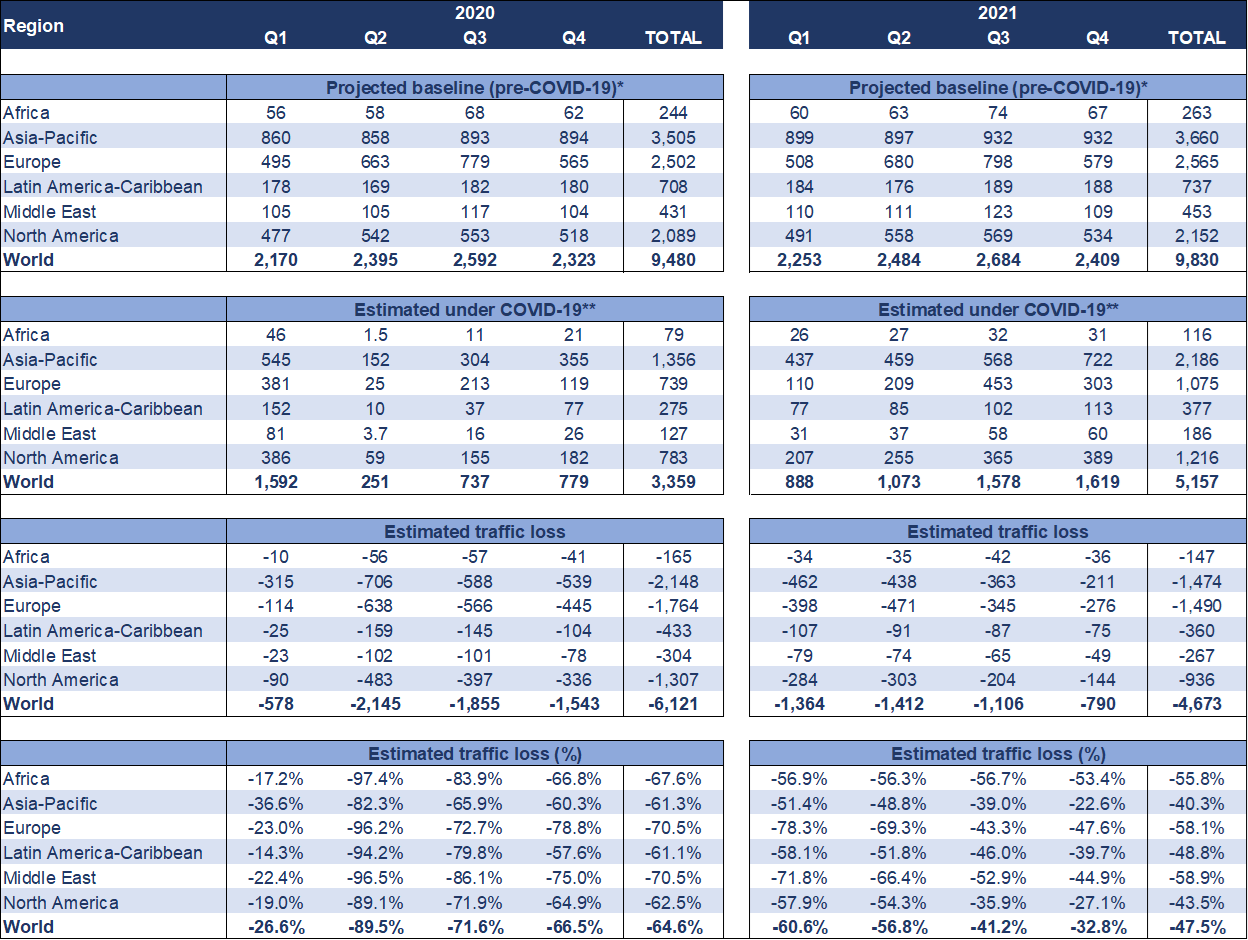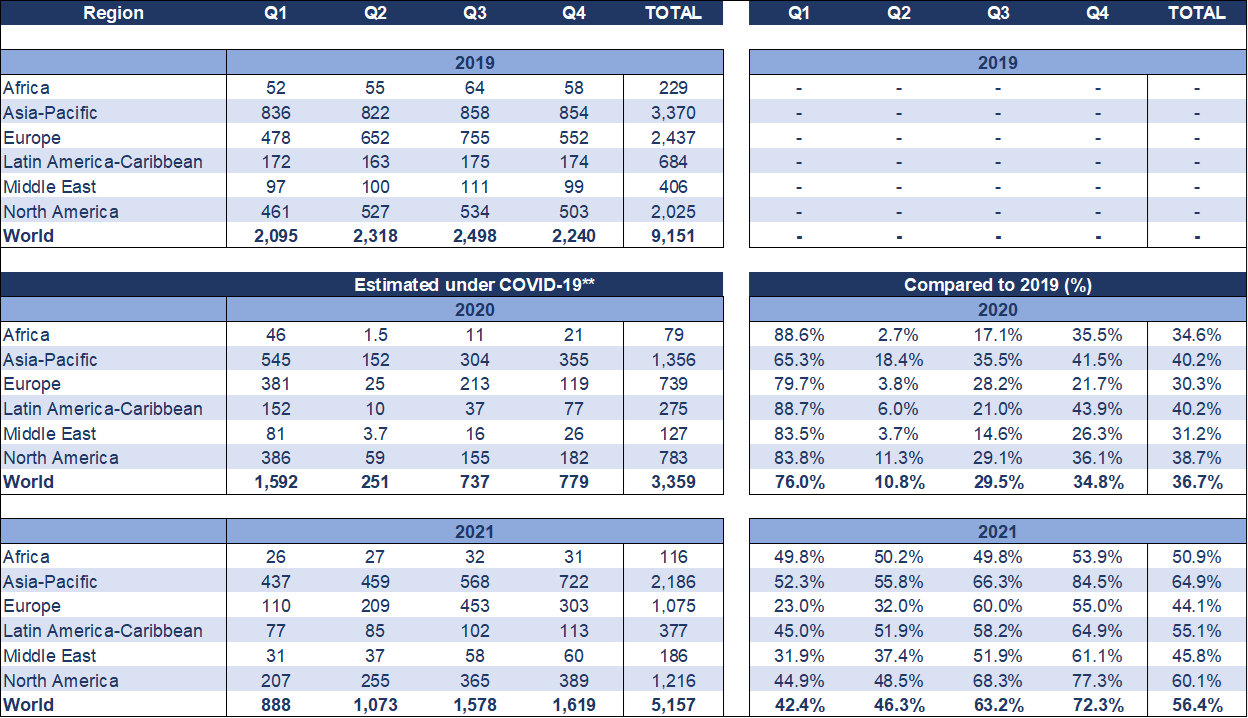INTERNATIONAL. Global airport passenger numbers increased +6.4% in 2015 to reach almost 7.2 billion, according to Airports Council International (ACI) figures. It is the strongest growth rate since 2010.
The organisation has released its ‘2015 ACI World Airport Traffic Report’, which features data on 2,300 airports in 160 countries.

ACI World Director General Angela Gittens
Airport traffic in emerging markets and developing economies grew faster, at +8.1%, than in advanced economies (+5.2%) in 2015, reaching a 44% share of global passenger traffic.
Asia Pacific airports handled the most passengers, at 2.46 billion, representing growth of +8.6%. Airports in Europe recorded +5.2% growth, to 1.93 billion, while traffic rose +5.3% in North America to reach 1.72 billion.
Latin America/Caribbean traffic was up +5.3% to 571 million; Middle East airports recorded +9.6% growth to reach 334 million; and there were 180 million passengers in Africa, representing a +0.6% increase.
“Persistence and resilience are two themes that best describe air transport demand in 2015,” ACI said. “Despite a slight weakening of economic growth at +3.1% in 2015, growth in passenger traffic approached the pre-recessionary growth levels that were seen in 2004 to 2007.
“International tourism in particular was irrepressible in 2015, even considering the geopolitical risks that persisted in certain parts of the world, such as Eastern Europe and the Middle East. By and large, the international traveller appears to have discounted these risks.”
ACI also noted that 37 airports handled more than 40 million passengers in 2015. The number has more than doubled since 2005, when 16 airports handled that amount of traffic.
BRICS outperforms MINT BRICS countries (Brazil, Russia, India, China and South Africa), which represent 21.4% of global passenger traffic, recorded +8.2% growth. MINT countries (Mexico, Indonesia, Nigeria and Turkey) achieved +5.5% growth. |
Airlines in this category achieved year-on-year growth of +6%, which ACI said was “unprecedented”, particularly since a majority of the airports are from the mature markets of North America and Europe.
“After years of consolidation and capacity discipline on the part of US-based airlines, North America has experienced an important resurgence in air transport demand, particularly at many of its large hubs.
“Where physical capacity and infrastructure could accommodate, the so-called mature market’s recent upsurge in traffic are further reminders that higher growth in throughput above historical trends is still possible in these markets. Both airlines and airport operators have expanded and optimised their capacity in order to accommodate the demand for air transport.”
Dubai International maintained its position as the world’s busiest international airport, with +10.7% year-on-year passenger growth to reach 77.5 million. London Heathrow was second, with +2.5% growth and 69.8 million passengers. Hong Kong International, in third, recorded a +8.2% increase to reach 68.1 million.
ACI World Director General Angela Gittens said the industry should “maintain cautious optimism” as it “navigates through 2016”.
Busiest airport cities get busier The world’s top 30 airport cities handled almost a third of global passenger traffic. London remained the world’s largest airport system with over 155 million passengers handled at six airports. New York maintained second position with 123 million passengers at three airports. Tokyo was the third city market with 113 million passengers. |
“There are several impediments that could curtail the continued rise in demand, which could potentially encumber growth prospects over the short- and medium-term,” she said. “Specifically, these are related to geo-political unrest, terrorism and threats to security in certain parts of the world.
“Physical capacity considerations and potential bottlenecks in air transport infrastructure also pose challenges in accommodating future air transport demand.
“Finally, protectionist policies that retreat from further economic integration and air transport liberalisation could have adverse contractionary effects on the air transport industry.
“Irrespective of the challenges that lay ahead, by and large, the evidence of history supports the long run resiliency of the industry where connecting people, places, cultures and commerce is paramount in the shared mission of the aviation community.”















